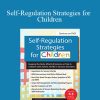[Download Now] Self-Regulation & Executive Functioning in Children and Adolescents: Visual Strategies and Hands-on Techniques to Provide Structure, Predictability, and Routines – Kathy Morris
$199.00 Original price was: $199.00.$50.00Current price is: $50.00.
[Download Now] Self-Regulation & Executive Functioning in Children and Adolescents: Visual Strategies and Hands-on Techniques to Provide Structure, Predictability, and Routines – Kathy Morris
Product Delivery: You will receive a download link via your order email immediately
Should you have any question, do not hesitate to contact us: support@imclibrary.com
[Download Now] Self-Regulation & Executive Functioning in Children and Adolescents: Visual Strategies and Hands-on Techniques to Provide Structure, Predictability, and Routines – Kathy Morris
Sale page_https://catalog.pesi.com/item/49146/
Archive: https://archive.fo/fwYgh
Children and adolescents who struggle with self-regulation often look like they aren’t paying attention, lack self-control or have difficulty making transitions.
They tend to act out, get placed in timeout, or sent to the principal’s office—missing important learning and socializing time. Seemingly unaware of the consequences of their behavior these kids push boundaries even when given punitive consequences. We are familiar with the kids; the challenge becomes how to intervene.
In this workshop recording, learn the components of self-regulation that are crucial to understanding sensory, cognitive, behavioral, and psychological breakdowns of children.
You will learn how working memory, inhibitory control, and mental rigidity—components of Executive Functioning (EF) —impede self-regulation and how essential supporting self-regulation development is to improved EF.
The good news—self-regulation and EF skills can be taught!
Drawing on over 45 years of professional experience Kathy Morris, M.Ed., will teach you visual strategies and hands-on techniques that provide children structure, predictability and routines—components essential to supporting self-regulation.
Under Kathy’s expertise, you will learn:
- Communication strategies most effective when children are under stress
- Visual ques to alert of schedule changes, surprises and transitions to alleviate anxiety
- Video modeling scenarios to teach social skills and flexible thinking
- Powerful incentives to teach acceptable behaviors and problem-solving skills
- Visual supports to target desired behavior and provide clear direction
- And more!
Through video case studies, visual demonstrations of strategies and dynamic discussions, you will learn how to implement these strategies tomorrow morning at school, during therapy or counseling, home and community.
- Articulate the metacognitive and self-regulation strands for executive functioning components and how a breakdown in one strand impacts the other strands of executive functioning.
- Implement visual strategies that support communication, social skills, and behavior skills and decrease dysregulation behaviors.
- Utilize case studies to illustrate and evaluate the concepts of inhibitory control, working memory, emotional control, and mental rigidity.
- Create treatment strategies to meet the needs of individual students demonstrating a lack of self-regulation skills to improve classroom behavior and performance.
- Discriminate between the functions of behaviors in order to determine whether a behavior is a tantrum or an executive function meltdown.
- Identify effective interventions and calming strategies when working with students who are overstimulated and experiencing sensory breakdowns.
- Implement a “system” of interventions rather than a person dependent intervention to increase the odds of interventions being effective and accessible in multiple settings.
Self-Regulation and Executive Functioning (EF)
- Neuroanatomy of the brain
- Mirror neurons
- Sensory issues vs. behavior issues
- Address communication breakdowns before they become social skills deficits
- Structure, predictability and routines to support self-regulation
- Research-based interventions
VISUAL STRATEGIES AND HANDS-ON TECHNIQUES TO PROVIDE STRUCTURE, PREDICTABILITY AND ROUTINES
Surprise Cards
- Engagement learning: Clock partners
- Eloise: Meltdown video
Social Scripts
- Caleb
- Aaron
- Video Monitoring: Case example
Power Cards
- Levels of talking: Video examples
- Sheldon: High interest area
- Power card example
- Creating power cards collaboratively
- Power cards for different age and developmental levels
Calming Strategies
- Emotional control
- Anxiety management video
- Emotions charts
- Relaxation schedules
- Calm down cards
- Breathe cards: Video
Self-Regulation Techniques
- Social stories formats: Video examples
- Me-Moves: Experiential practice
- T-Charts
Inhibitory Control
- Turtle technique
- Impulse control
- Positive behaviors flip books
- 1st then cards
- Now and next cards
- Key chain rules: Video Example
Tag: Self-Regulation & Executive Functioning in Children and Adolescents: Visual Strategies and Hands-on Techniques to Provide Structure, Predictability, and Routines – Kathy Morris Review. Self-Regulation & Executive Functioning in Children and Adolescents: Visual Strategies and Hands-on Techniques to Provide Structure, Predictability, and Routines – Kathy Morris download. Self-Regulation & Executive Functioning in Children and Adolescents: Visual Strategies and Hands-on Techniques to Provide Structure, Predictability, and Routines – Kathy Morris discount.
Delivery Method
– After your purchase, you’ll see a View your orders link which goes to the Downloads page. Here, you can download all the files associated with your order.
– Downloads are available once your payment is confirmed, we’ll also send you a download notification email separate from any transaction notification emails you receive from IMC.sale.
– Since it is a digital copy, our suggestion is to download and save it to your hard drive. In case the link is broken for any reason, please contact us and we will resend the new download link.
– If you cannot find the download link, please don’t worry about that. We will update and notify you as soon as possible at 8:00 AM – 8:00 PM (UTC+8).
Thank You For Shopping With Us!


![[Download Now] Self-Injury Assessment & Treatment: Clinical Strategies When Your Client’s Answer to Pain Brings More Pain - David G. Kamen](https://imc.sale/wp-content/uploads/2022/02/Self-Injury-Assessment-Treatment-Clinical-Strategies-When-Your-Clients-Answer-to-Pain-Brings-More-Pain-–-David-G.-Kamen-100x100.jpg)
![[Download Now] Self-Regulation & Executive Functioning in Children and Adolescents: Visual Strategies and Hands-on Techniques to Provide Structure](https://imc.sale/wp-content/uploads/2022/02/Self-Regulation-Executive-Functioning-in-Children-and-Adolescents-Visual-Strategies-and-Hands-on-Techniques-to-Provide-Structure-Predictability-and-Routines-from-Kathy-Morris-400x556-1.jpg)
![[Download Now] Self-Regulation & Executive Functioning in Children and Adolescents: Visual Strategies and Hands-on Techniques to Provide Structure](https://imc.sale/wp-content/uploads/2022/02/Self-Regulation-Executive-Functioning-in-Children-and-Adolescents-Visual-Strategies-and-Hands-on-Techniques-to-Provide-Structure-Predictability-and-Routines-from-Kathy-Morris-400x556-1-100x100.jpg)
9 reviews for [Download Now] Self-Regulation & Executive Functioning in Children and Adolescents: Visual Strategies and Hands-on Techniques to Provide Structure, Predictability, and Routines – Kathy Morris
There are no reviews yet.